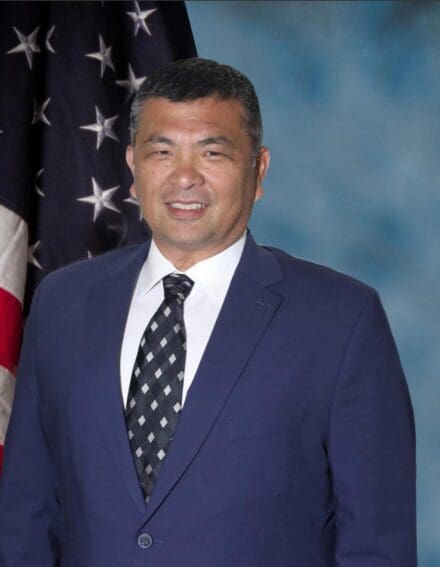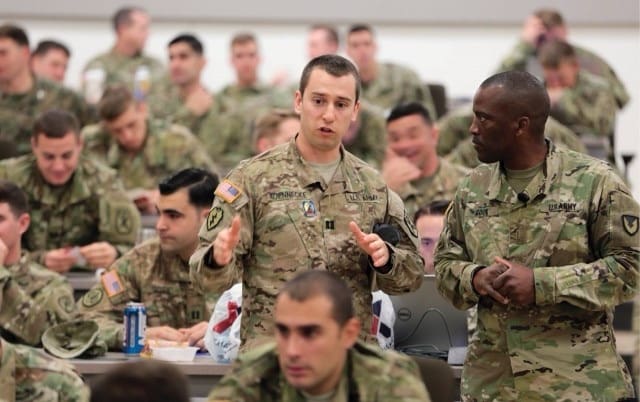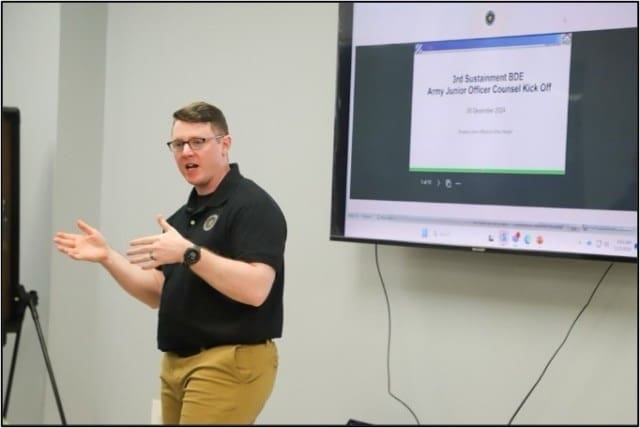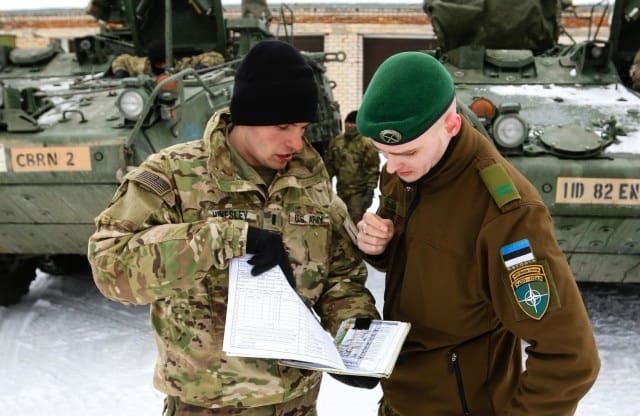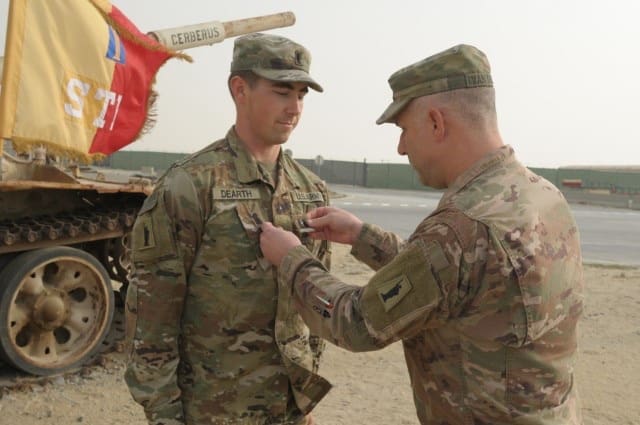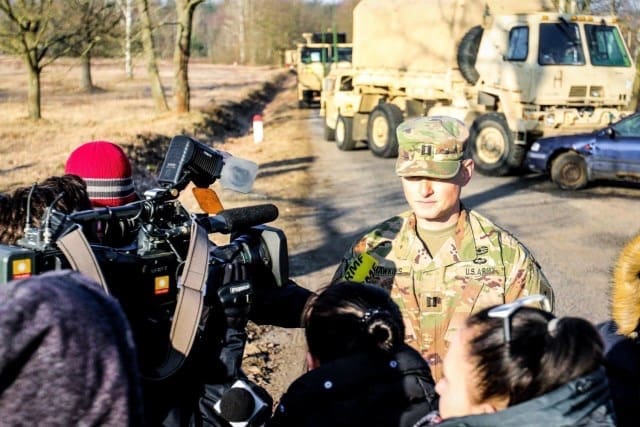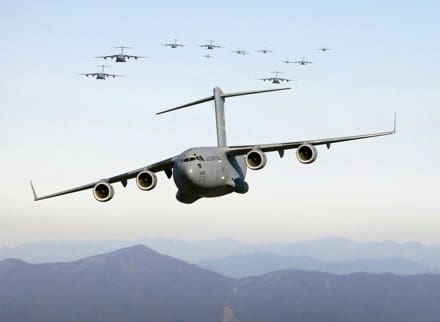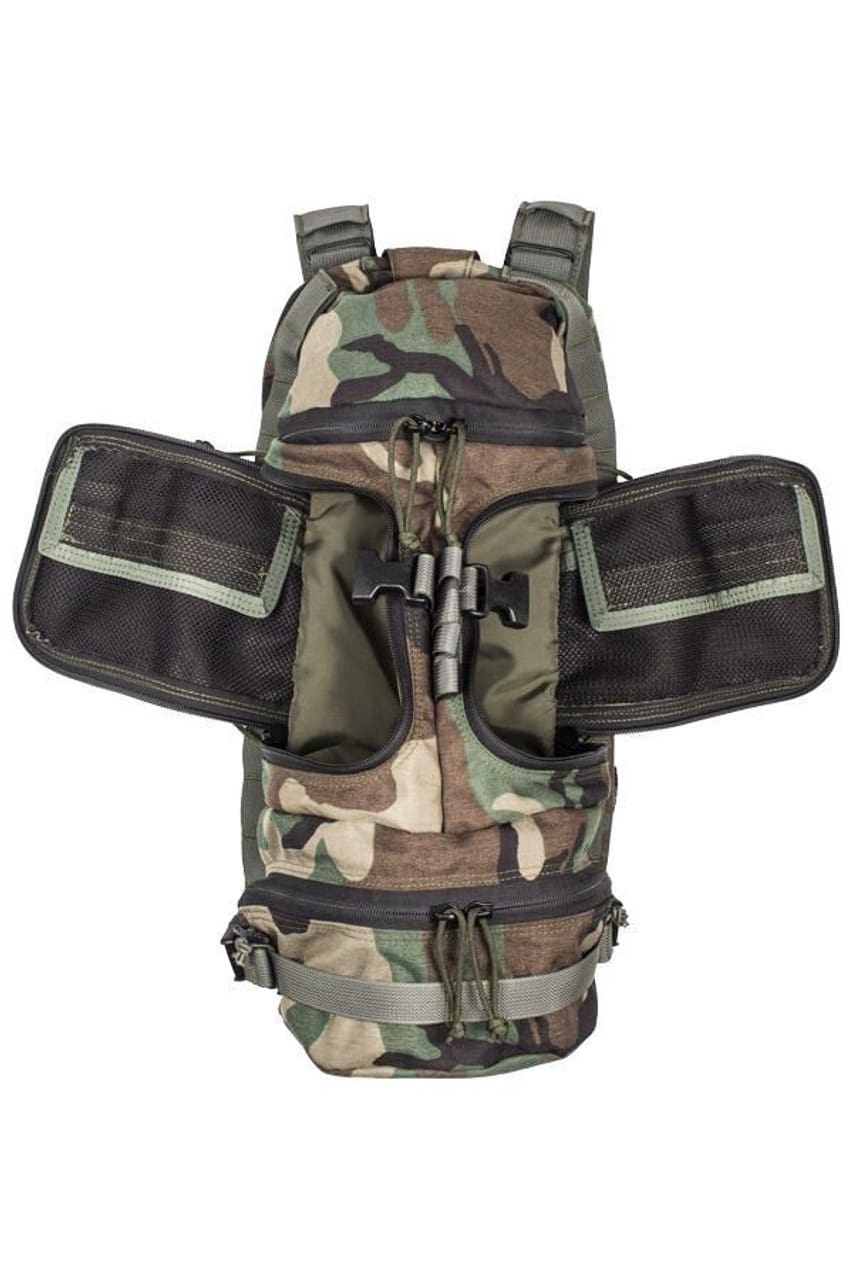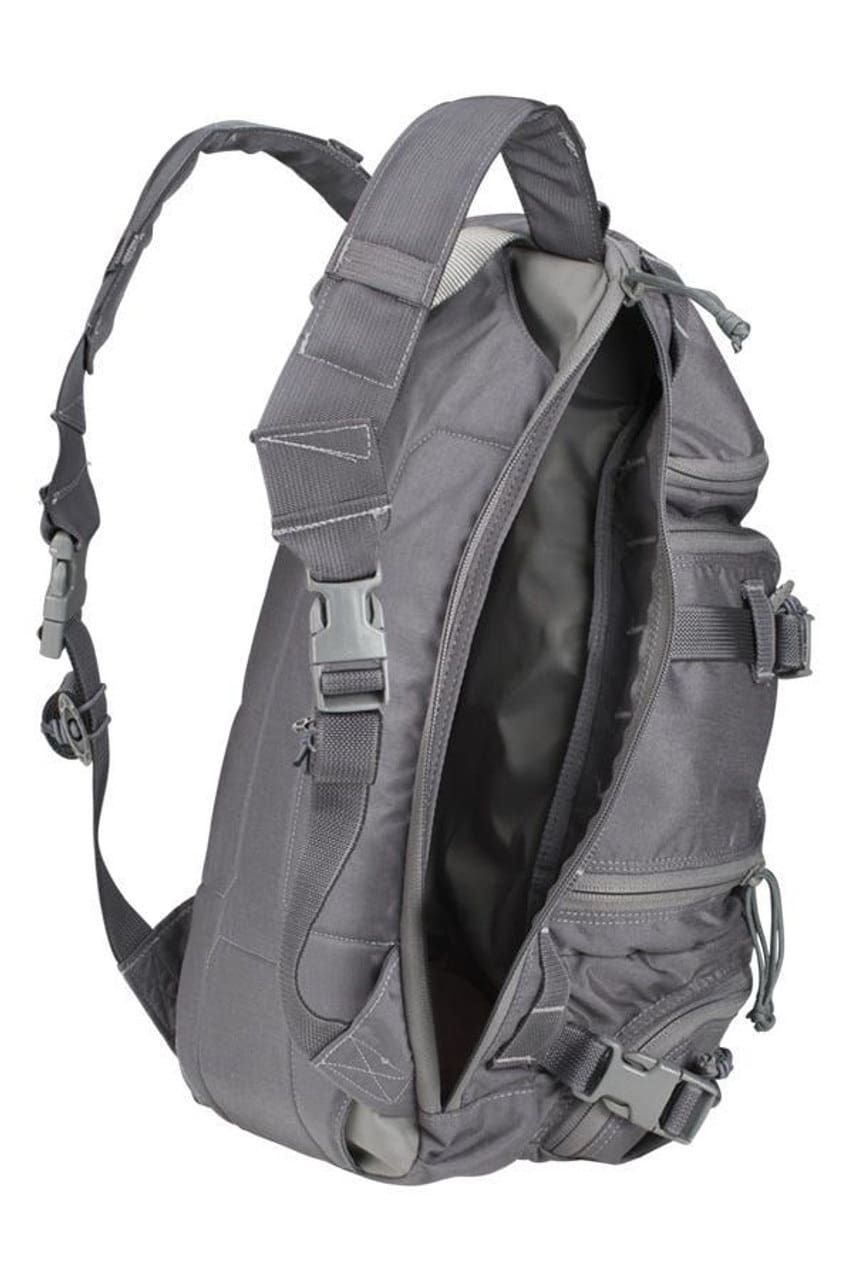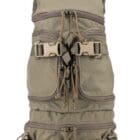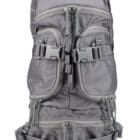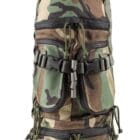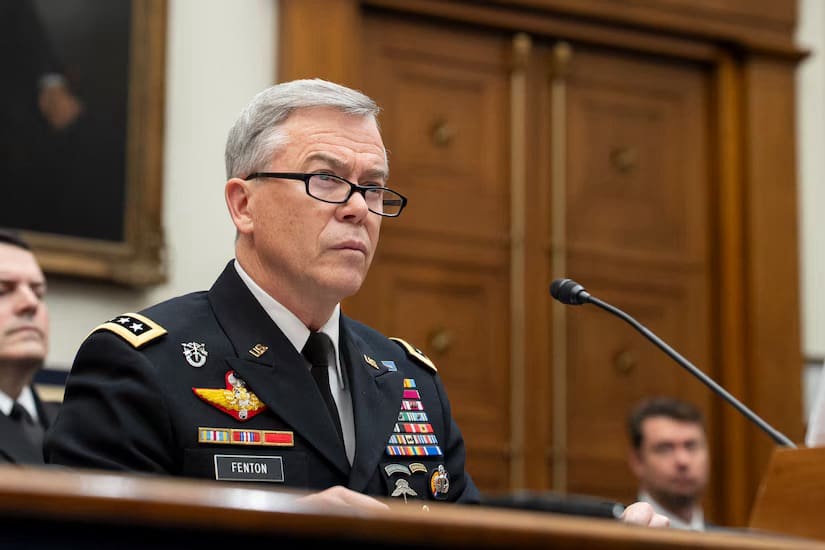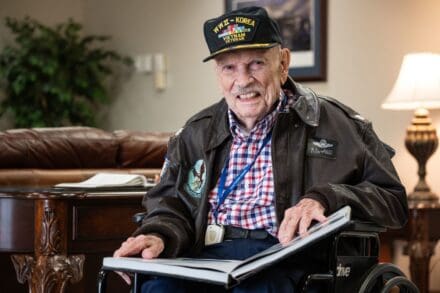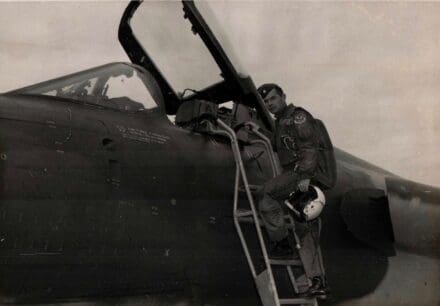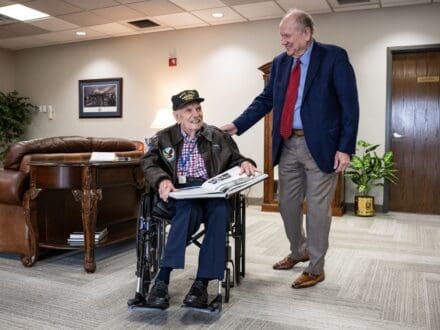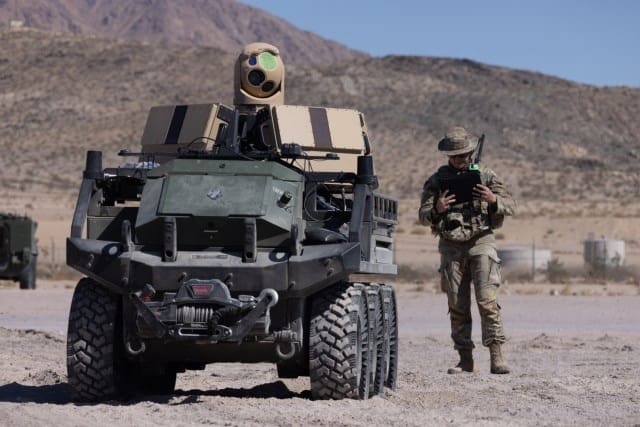
FORT IRWIN, Calif. — In early March, Soldiers, technology, equipment and defense industry partners came together at the National Training Center to execute Project Convergence Capstone 5 (PC-C5), a critical component of the U.S. Army’s Continuous Transformation efforts. The first portion of PC-C5 focused on enabling operations at the Corps and below level along with integration with Joint and Multinational allies and partners.
Participants of previous Project Convergence events can see similarities, as PC-C5 was built upon the successes and lessons learned from earlier experiments. However, they will also see the vast differences that planners developed to ensure concept-driven experimental objectives align with the future Army Warfighting Concept and the Joint Warfighting Design.
PC-C5 is a critical proving ground for emerging technologies and concepts crucial to enabling a data-centric and networked fighting force. Participants are engaging in both live and simulated experiments focused on:
Data-Driven Decision Making: Evaluating the effectiveness of advanced data analytics and artificial intelligence to provide real-time situational awareness for rapid, informed decisions.
Expanded Maneuver: Experimenting with new concepts and technologies that enhance the ability to maneuver and engage adversaries across land, air, sea, space and cyberspace.
Forging Seamless Joint and Multinational Interoperability: Refining the ability of allied forces to operate together seamlessly across all domains.
Brig. Gen. Zachary Miller, PC-C5 Deputy Experiment Director, and U.S. Army Joint Modernization Command commanding general, said, “What Project Convergence does is bring every single war-fighting system we have together in one place.”
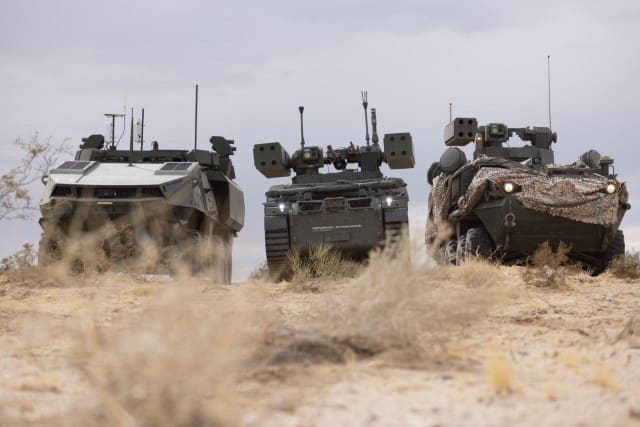
Additionally, the Army is exploring four primary warfighting notions during PC-C5. The first is expanded maneuver aimed at how the joint force is thinking about time and space in all domains. Second is cross-domain fires, involving how to shoot and create effects across all domains of warfare. Third is formation-based layered protection, which is the idea of how to protect units in all domains, such as the electromagnetic spectrum, dispersion of command posts and countering unmanned aerial systems. Last is command and control (C2) and counter-C2, which prevents the adversary from being able to command their forces.
To explore these notions, the experiment consists of more than 6,000 personnel from joint and multinational military forces, plus defense industry participants executing multiple vignettes across two scenarios.
Participants brought legacy equipment and new technologies to the event, including drones, robotics, and concealment equipment.
“Since last Capstone, the Army has thought deeply about the future operating environment and what it is going to take to win, and what we don’t have now,” Miller said. “We’re layering new technology, new capabilities, with a new way to organize and seeing if that helps us achieve the warfighting aims we know we have.”
To gauge the effectiveness of these emerging technologies, participating units experimented with the equipment in a replicated combat scenario. PC-C5 included the primary units from the 82nd Airborne Division and the 1st Armored Division, with many other U.S. military units supporting, along with forces from Britain, France, New Zealand, Australia and Canada. Together, they executed three vignettes.
During Vignette One, the 82nd Airborne Division, British and Australian forces conducted a joint forcible entry operation. This vignette focused on a large-scale maneuver by an Army division that needed to suppress enemy defenses to reduce enemy air space while increasing friendly air space.
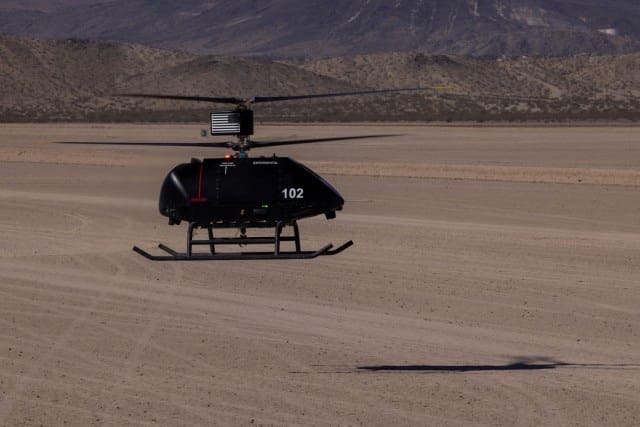
Vignette Two saw elements of the 1st Armored Division supporting the 82nd Airborne Division along with multinational partners conduct a combined arms breach. C2, fires and using human-machine integration formations with robotic and autonomous technologies were crucial to survivability and lethality during this vignette, which set the conditions for Vignette Three.
Vignette Three was built on the previous vignettes, in which the 1st Armored Division defended the seized objective. During this vignette, the unit had to retain key terrain for the joint force while generating combat power to destroy enemy capabilities.
Across all three vignettes, C2 and data-driven decision-making were critical elements driving successful actions.
“What we’re trying to do is take these emerging technologies where we can get this data better and faster to execute,” said Lt. Col. Tad Coleman, commander of 2-37 Armor Battalion, 1st Brigade, 1st Armored Division.
PC Capstone events present a unique opportunity to demonstrate the Army’s transformation efforts to senior leadership. Within the first few weeks of his confirmation as the 26th Secretary of the Army, the Honorable Daniel Driscoll, accompanied by Gen. Randy George, the Army’s chief of staff, visited Soldiers during PC-C5 and saw first-hand how the Army is pushing transformation efforts into the future.
During Driscoll’s confirmation, he highlighted readiness and modernization as priorities.
“The world is changing rapidly, and we must ensure the Army is prepared to operate in new, complex, and contested environments,” Driscoll said. “From advancing our capabilities in multi-domain operations, to cutting-edge technologies, my sacred duty to our Army is to ensure our Soldiers have the world’s finest training, equipment and leadership to accomplish any mission.”
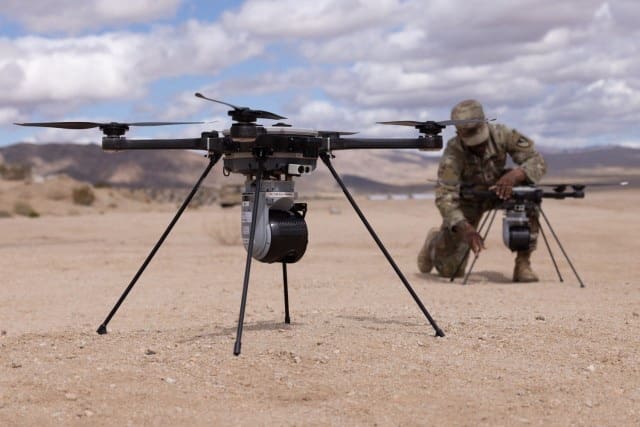
Viewing live experimentation at PC-C5 gives leaders an understanding on how technologies in the hands of Soldiers shapes future decisions. Some of these technologies may end up in Transforming in Contact 2.0 or future iterations.
In an interview with Breaking Defense George stated, “TiC is very, very valuable to us because we can do it in formation after formation after formation. We can also do it in every different environment, like Europe, [the Indo-Pacific Command] INDOPACOM, stateside [or] in the Arctic… that’s the real advantage of TiC.”
Some participants will transition to Scenario B as Scenario A finishes at NTC.
Scenario B, conducted in the U.S. Indo-Pacific Command, is experimenting with all service components at the combatant command level.
Experimenting in the Pacific is not new, but incorporating experimentation into existing exercises provides additional learning opportunities.
As part of the U.S. Army’s campaign of learning, PC is designed to aggressively advance and integrate the Army’s contributions to the Joint and Multinational Force and ensure that the Army, as part of the Joint and Multinational fight, can rapidly and continuously converge effects across all domains — air, land, sea, space and cyberspace — to overmatch our adversaries.
By SGT Joseph Enoch and David Miller, PC-C5 Joint Information Center


